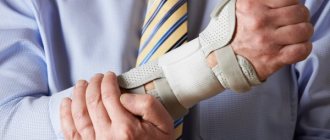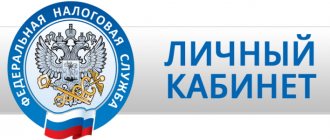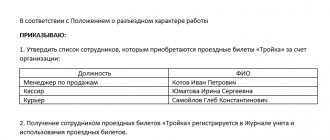An industrial injury should be understood as an accident that occurs to a person at his workplace. The severity and specificity of work-related injuries are influenced by the following factors:
- the workplace environment and its features;
- type of work activity;
- specifics of the employee's personality.
There is no clear and generally accepted classification of the causes of injuries at work, but there are general principles on the basis of which employers and employees take further action.
What is a work injury
If an employee suffered damage to life or health directly at work or on the way to it, the injury is industrial. With damage that was received directly during work, everything is more or less clear. But various incidents outside the employing organization will raise many detailed questions. This list will help you understand the situation better:
- injuries were received directly in the performance of duties;
- the employee will do what the manager told him;
- The accident occurred during a lunch or rest break established by the employer;
- the employee carried out instructions from the employer outside the enterprise;
- An employee was injured on a business trip.
At first glance, this list looks quite simple and understandable, but each item hides a lot of nuances.
Remember - if you travel in your manager’s car, your injury in any case will be work-related. If you use your own car, one of the following conditions must be met:
- your car was used for work purposes, and this is stated in the employment contract
- you drove your car, following the order of your manager;
- the accounting department has a copy of the title of your car;
- you drove the car by proxy;
- you have a waybill or other document.
Simply put, the path or means of transportation must be related to the place of work and this can be clarified in the documents. If you were just driving to work in your own car and got into an accident, then you will not be able to shift responsibility to the employer.
Conditions for recognition of injury
The employer is obliged to begin an investigation if harm to health is caused as a result of an accident (Article 227 of the Labor Code of the Russian Federation):
- physical trauma, injury;
- electric shock or lightning;
- frostbite;
- drowning;
- heatstroke;
- burns, etc.
An injury will be recognized as work-related if the accident occurred:
- on the territory of the enterprise, including during lunch or during overtime;
- on the way to work or back in a company car;
- during a business trip and along the route;
- during the shift period, etc.
The provisions of the Labor Code of the Russian Federation protect not only employees, but also trainees undergoing internship at the enterprise, employees of other organizations delegated to perform a certain amount of work, convicts recruited to work, patients of medical production plants, etc. (Article 227 of the Labor Code of the Russian Federation).
Severity of injury
In addition to many nuances regarding the place and time of injury, there are significant differences in determining its severity. The type of injury - be it a burn or a fracture - does not play a key role in the investigation of the presence of a work injury. The degree of severity of the injuries received by the employee is of primary importance for further proceedings. All work-related injuries can be divided into severe and minor. Accordingly, monetary compensation for different degrees of injury will vary.
Severe degree
Severe industrial injuries are considered to be those types of damage that pose a direct threat to the life and/or health of the employee. These include:
- burns (all types);
- injuries with a total blood loss of 20% or more;
- loss of hearing, speech, vision;
- mental disorders;
- bone fractures;
- traumatic brain injuries, etc.
Please note that occupational diseases that cause loss of ability to work and/or permanent health problems are also included in the list of possible injuries at work.
Mild degree
Mild injuries are minor damage to the health of an employee that does not threaten his life and does not threaten long-term loss of ability to work or a change in health group. Minor damage includes:
- scratches;
- injections;
- bruises;
- abrasions, etc.
Types and categories of occupational diseases
Types of accidents at work
Typically, the types of injuries at work are divided into 5 groups of occupational diseases.
- Group 1: diseases resulting from contact with chemicals.
- Group 2: diseases caused by prolonged contact with dust.
Diseases caused by prolonged contact with dust
- Group 3: various physical effects causing, for example, damage to vision or hearing.
- Group 4: injuries caused by a psychological factor.
- Group 5: injuries and diseases arising from exposure to unfavorable environmental conditions and biological factors.
Poisonings acquired at work are also grouped into the category of “acute” occupational diseases. The definition of “acute” means the occurrence of a disease as a result of a single, short-term impact on the body, as opposed to, for example, psychological factors.
Important! Negligent handling of chemicals and other substances, failure to comply with safety precautions when working with them is the main cause of chemical poisoning.
What is not considered a work injury?
Not every injury is work-related. In some cases, even if an employee was injured directly at work, the injury cannot be blamed on the employer. What does not apply to production? injury:
- self-harm, suicide - if this is confirmed by the investigation;
- injuries that were accompanied by alcohol or drug intoxication;
- domestic injuries not related to the production process, regardless of the time and place of occurrence;
- damage that occurred during a corporate party or other group celebrations;
- injuries received during or after the commission of a crime.
Please note that physical harm caused to an employee by other people can be classified in two ways. Here the investigation will study all the circumstances.
What should an employer do?
Any event that occurs at work should not go unnoticed by the employer. First, the manager provides first aid to the victim, and then investigates the circumstances and causes of the incident. The “productivity” of the injury is determined by the consequence. Please note that any work-related injury entails legal liability for the organization.
Standards
The safety of employees in the workplace is the responsibility of the employer. Failure to fulfill such duties may result in administrative liability. After providing the injured party with the necessary medical care, it is necessary to find out whether the incident can be considered a work-related injury.
- It is necessary to call an ambulance and send the injured person to a medical facility.
- The employer is obliged to immediately prevent a reoccurrence of the incident if the cause is obvious and remediable (for example, if an employee receives an electric shock, it is necessary to de-energize the territory of the enterprise).
- The scene of the incident must be left untouched until specialists arrive to investigate the incident.
- It is necessary to assemble a commission, which includes: a labor protection specialist, a representative of the employer, a representative of a trade union or similar organization. It is also necessary to attract witnesses to what happened.
- Send a commission to the scene of the incident.
The employer is responsible for the safety of not only employees, but also trainees, delegates of other organizations, convicts and patients of the medical treatment facility involved in work.
In addition, the injured party is legally authorized to serve on the commission investigating the incident.
The commission is obliged:
- Inspect the scene of the incident;
- Interview the injured party;
- Conduct interviews with witnesses and eyewitnesses;
- Study the medical report.
All surveys must be recorded in separate protocols, and after studying the documents, an act must be drawn up according to the approved form N-1.
Time frame for investigation
The timing of the investigation directly depends on the complexity of the incident. Three days from the moment of the incident are allocated for a standard investigation. However, the investigation period will be increased to fifteen days in two cases:
- The victim died;
- A group of people were injured.
Within 24 hours from the moment of death of an employee and/or injury to a group of employees, the employer must notify its industry department, the territorial department of the State Labor Inspectorate, the prosecutor's office and the department of the Social Insurance Fund.
Required documents
Upon completion of the investigation, if the injuries received are recognized as a work-related injury, the organization must ensure that the employee receives compensation and/or benefits. To do this, the following documents or copies are sent to the FSS: notification, investigation order, act N-1, protocols (interviewing witnesses, responsible officials, site inspection), medical report, employment contract or book, SNILS, certificate in form 316/u and reporting the consequences of NS.
You can always check the current list of documents on the FSS website. This list is often individual and depends on the severity of the injuries and the complexity of treatment.
Causes of occupational diseases
Occupational diseases are a type of industrial injury, but they arise gradually, usually of the same type in people working in equally harmful conditions. They are provoked by:
- outdated technologies;
- unequipped workplaces;
- poor sanitation;
- failure to use protective equipment;
- retreat from technology;
- the need for contact with harmful substances.
When creating casting molds, the mixture is compacted by vibration. Molders fill the following boxes directly between the shakers. The floor is constantly shaking. Similarly, there are large machines with platforms for installing parts and turning on equipment. The lack of modern instruments showing the exact coordinates of the cutter and load forces the worker to stand on a vibrating metal platform for a long time. This gradually leads to industrial injuries - damage to the musculoskeletal system.
Galvanic baths and containers for electrolysis must be covered with lids on top. Vapors are removed into ventilation ducts. Active forced ventilation is installed in the room. Older equipment does not have such protective measures. Workers inhale harmful fumes.
A large percentage of diseases are caused by drafts and working at low temperatures indoors or outdoors in freezing temperatures. For work in winter conditions, in addition to special clothing, a schedule of heating and hot meals, and warm bathrooms are provided.
Calculation of damage caused
The calculation of the damage caused to the injured employee is determined by a medical expert commission, in the event of a sustained loss of working capacity. A referral to the medical and social bureau is issued by the patient’s attending physician.
This examination establishes the degree of disability as a percentage on a scale from 10 to 100. The percentage depends on the actual degree of harm to health due to the injury. The results of the commission’s examination directly determine the amount of payments that are due to the injured employee of the enterprise.
Types of employee payments
Regardless of how long an employee has been working in the organization, the employer is required to pay a temporary disability certificate in the amount of 100% of the salary .
In addition, if, as a result of the investigation, the employer’s guilt is established, the employee has the right to recover compensation for damages from the company - both moral and physical. This is evidenced by Article 11 of the Federal Law of July 24, 1998 No. 125-FZ. The calculation of material compensation is calculated based on the amount of insurance payment (one-time).
In accordance with Art. 12 of Law No. 125-FZ, in case of loss of ability to work for a long time or for life, the victim has the right to recover a monthly benefit. The calculation of monthly compensation depends on the average monthly salary of a given employee over the past 12 months.
When calculating both types of compensation, the degree of loss of ability to work and the coefficients of a particular region are important.
If a person dies due to an industrial accident, his relatives have the right to receive a one-time insurance payment - Article 11 of Law No. 125-FZ.
The sick leave is paid by the employing organization, and compensation payments are made through the social insurance fund.
Please note that in order to receive the required funds, the injured party must provide the relevant documents to the insurance fund:
- certificate of incapacity for work;
- documents confirming payment of expenses for treatment and/or rehabilitation;
- an application containing a request for reimbursement of specified amounts of expenses or an application for a one-time/monthly payment.
Controversial issues
The issue of incidents at work and in organizations is a sensitive topic that employers really don’t like. In order to fully exercise their rights, every employee must be aware of the possibilities for resolving controversial or ambiguous issues.
- To record an accident, it will be enough to notify the employer about it orally.
The victim is not required to write a statement addressed to the manager. The arrival of an ambulance on the territory of the enterprise or a visit to the hospital will itself record the incident.
- The employer is required to draw up an order to create a commission to carry out the investigation. If the manager ignores this responsibility, it is necessary to report this to the State Tax Inspectorate of the relevant region.
For inaction, the head of the organization faces administrative liability. An application to the State Tax Inspectorate can be drawn up in free form, the main thing is to indicate in it the date of the incident, its circumstances, and also attach medical documents.
- You should receive a copy of the report drawn up by the commission after the investigation within three days. This way you will learn about the commission's decision.
The report must record the presence or absence of a work-related injury, circumstances, causes of the incident and a list of those responsible. Violation of the specified period or form of the act threatens the chief with administrative liability . You can also send a complaint to the State Tax Inspectorate.
- If you disagree with the act presented by the commission, the employee has the right to appeal it within three months.
A report on a minor work-related injury can be appealed to the State Inspectorate of the region, but in more serious cases you need to go to court. Please note that the victim himself may be found to blame for the injury, with a percentage indicating his fault. This nuance affects the volume of payments from the Social Insurance Fund.
Concealing the fact of injury
In accordance with Article 15.34 of the Code of Administrative Offenses of the Russian Federation, concealment of the fact of an accident resulting in injury threatens the employer with a fine. Keep in mind that concealment of such an incident by an individual also entails the imposition of a monetary fine.
Forcing not to file a work injury
For one reason or another, employers do their best to avoid documenting work-related injuries. The main reasons for such actions are usually: fear of inspections and criminal prosecution, reluctance to spend working time and personnel on conducting an investigation.
You must understand that the organization must be legally responsible for its mistakes. If they try to persuade or force you not to file a work injury, then:
- Seek medical attention, indicating where and when the injury occurred.
- Do not remain at your workplace until the end of your shift, but immediately deal with the incident.
- Do not retroactively sign safety briefings, occupational safety briefings, and similar documents.
- Do not negotiate anything with your superiors and immediately inform the State Tax Inspectorate about the employer’s dishonesty.









